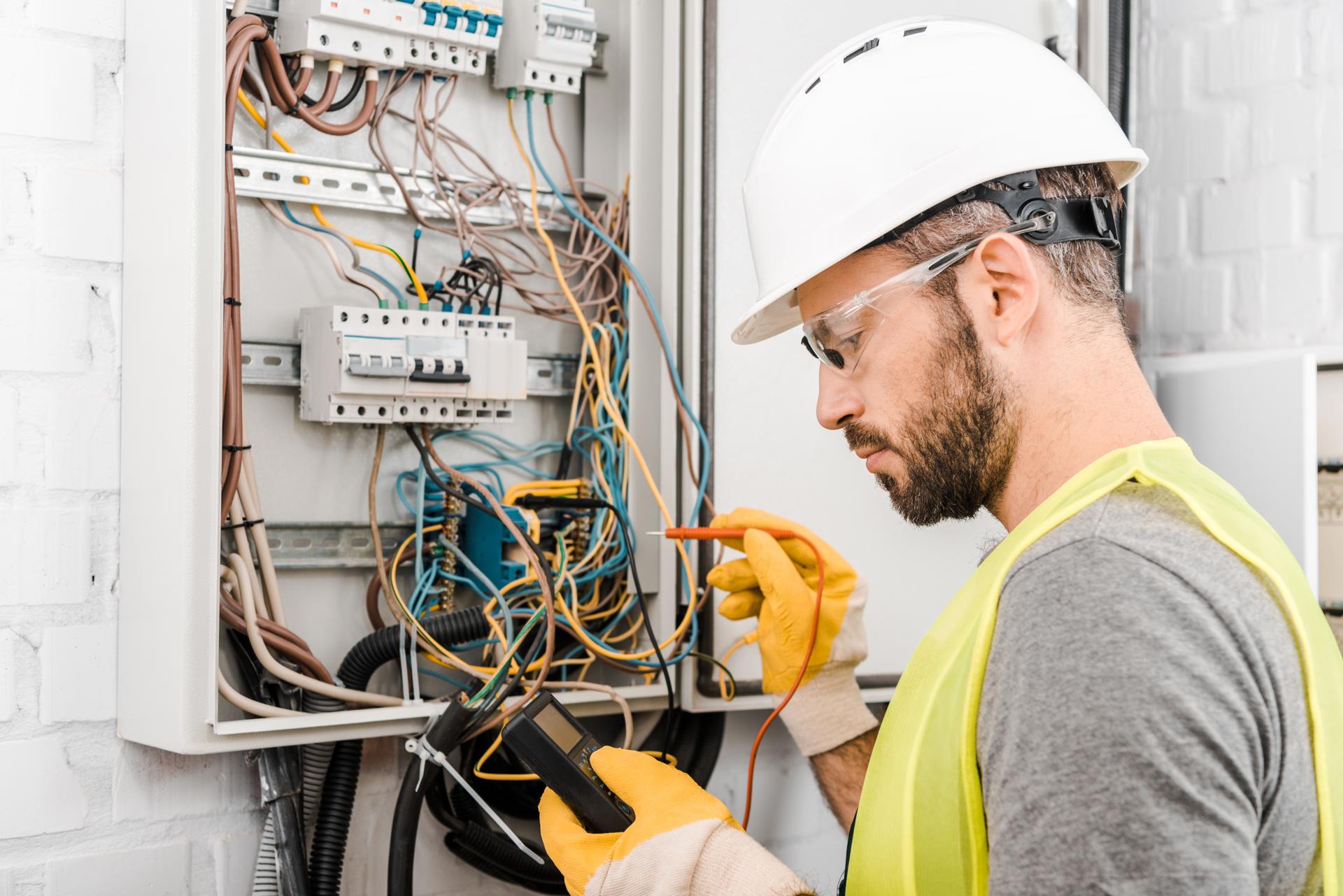Electrical Wiring 101: The Basics in Your Home

Electricity is an essential component of our everyday life, powering everything from the lights of our houses to devices that we use each day. But electricity systems are complex, knowing how they work isn’t easy. In this guide we’ll breakdown the elements in an electrical circuit and explain how circuits work to power devices and appliances. Our residential electricians can handle any electrical jobs you need.
Components of an Electrical System
An electrical system has several essential components that work to deliver power throughout homes. These include:
Breaker box: the central source of electrical energy in a house that is where electricity is divided into different circuits
Outlets and switches: the points where electricity is delivered to appliances and devices
Wiring: the electrical wires that transmit electricity from the breaker box to outlets and switches
Electrical appliances and devices: the appliances and devices that require electricity to function.
Electrical Circuits
An electrical circuit is a pathway that allows electricity to flow from the source (the the breaker box) to the appliances and devices in a home. There are two kinds of electrical circuits in the home: 120-volt circuits and circuits with 240-volt voltage. 120-volt circuits are utilized for the majority of household appliances and appliances, while 240-volt circuits are used for larger appliances such as dryers and air conditioners.
Electrical circuits work by creating the loop which allows electricity to flow from the source to the appliance or device. The loop consists of a hot cable that transports the power, a neutral wire that completes the circuit and the ground wire which provides an avenue for the electricity to get to the ground in case the fault occurs.
Understanding Electrical Wiring
Electrical wiring is available in a variety of different kinds, including non-metallic sheathed wire (NM) as well as armored cables (AC) and conduit. Each has its advantages and drawbacks and the selection of the wiring type is contingent upon the specific requirements for the particular installation.
Wiring conducts electricity by creating a flow of electrons that travel through the wire. Electrons move from the source to the device or appliance returning to the source via the neutral wire. It’s essential to ensure that the wiring is installed and maintained correctly, as defective wiring could lead to electrical hazards like shocks and fires.
Common Electrical Problems
Some common electrical problems in homes include tripping light bulbs, flickering breakers and dead outlets. The causes of these issues could be due to a variety of reasons, including overloading circuits, loose connections, and faulty wiring.
If you are experiencing any of these issues it’s crucial to pinpoint the cause and take appropriate action to fix the problem. In some cases, this may involve contacting an authorized electrician to look over and fix the wiring.
Final Conclusion, as well as a Call to Action
In conclusion, understanding how electrical wiring works is vital to ensure the safety and reliability of the electrical system in your home. By following the guidelines outlined in this guide, you can stay secure and stay clear of potential dangers.
In case you’ve got any concerns or questions regarding the electrical system in your home Don’t hesitate to reach out to Local Electrician Randwick. Our electricians are licensed and have the knowledge and expertise to handle all your electrical needs. Contact us by phone at 1300 941 876 to schedule a consultation.
FAQ
What are the symptoms of faulty electrical wiring?
Signs of faulty electrical wiring could include tripping breakers flickering lights, and dead outlets, to name a few.
When should I schedule my electrical system at home inspected?
It’s suggested that you get your home’s electrical system examined by an authorized electrician at least every 10 years.
What is the lifespan of electrical wiring?
The life span of electrical wiring depends on many factors, such as what kind of wire, the location it’s located in, as well as the quality of installation. In general, most electrical wiring lasts up to 30-years or longer if it’s installed with proper installation and maintenance.
Do I have the ability to fix electrical issues myself , or do I need to employ an electrician?
While some electrical issues can be fixed by homeowners, it’s advised that you employ an experienced electrician for the majority of electrical repairs. If you attempt to fix electrical issues without the proper education and experience can be dangerous and may cause injury or damage in your house.
What do I do if experience an electrical emergency in my home?
In the event of an electrical emergency the first step is to shut off the power supply to the area affected by turning off the fuse or breaker. Then, contact a licensed electrician to examine and fix the problem as quickly as you can.
If you follow these tips by following these guidelines, you can ensure the safety and reliability of your electrical system in your home and reduce potential hazards. Remember, when it comes to electrical repairs or installations, it’s recommended to rely on the professionals. Contact Local Electrician Randwick at 1300 941 876 for all your electrical needs.
